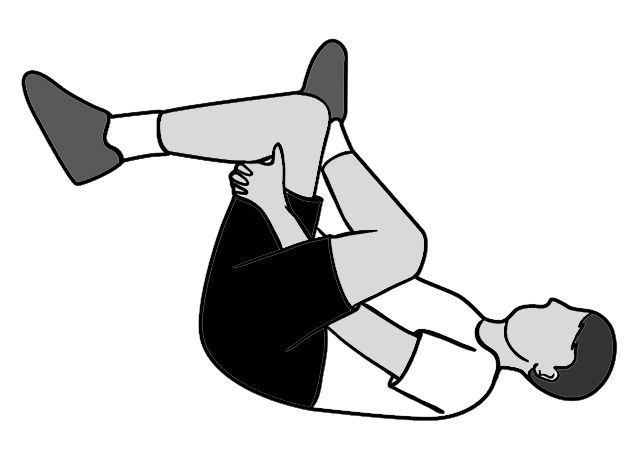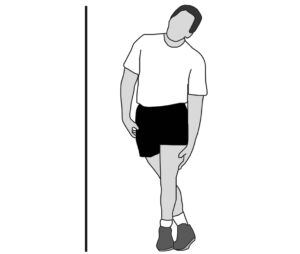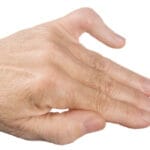Snapping hip syndrome refers to a condition where you experience a snapping sensation or hear a clicking sound in your hip during activities such as walking, rising from a chair, or rotating your leg. This distinctive sensation occurs when a muscle or tendon—fibrous tissue that connects muscles to bones—slides over a bony prominence in the hip.
While snapping hip is often harmless and painless, it can become a source of discomfort or frustration. In some cases, the repetitive snapping motion may contribute to bursitis, an inflammation of the fluid-filled sacs (bursae) that provide cushioning for the hip joint, leading to pain and swelling.
Anatomy
The hip is a ball-and-socket joint where the rounded head of the femur (thighbone) fits snugly into the acetabulum, a cup-shaped socket in the pelvis. Surrounding the acetabulum is a strong ring of fibrocartilage called the labrum, which forms a tight seal and enhances joint stability.
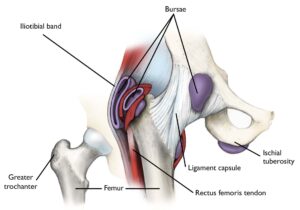 Illustration shows the bones of the hip joint, as well as the ligaments, tendons, and bursae that surround and protect the joint.
Illustration shows the bones of the hip joint, as well as the ligaments, tendons, and bursae that surround and protect the joint.
Description
Snapping hip syndrome occurs when tendons and muscles slide over bony structures in various regions of the hip, creating the characteristic snapping sensation.
- Outer Side of the Hip
The most common area for snapping hip is on the outer side of the hip, where the iliotibial (IT) band passes over the greater trochanter, a prominent part of the thighbone. When the hip is straight, the IT band lies behind the trochanter, and as the hip bends, the band shifts over it to the front. This back-and-forth movement, combined with the constant tension in the IT band, produces the snapping sound. Over time, repetitive snapping can lead to hip bursitis, a condition involving inflammation and thickening of the bursa, a fluid-filled sac that cushions the movement of muscles over bones.
The hip joint is stabilized by ligaments, which are reinforced by tendons that connect muscles from the buttocks, thighs, and pelvis to the bones. These muscles play a critical role in controlling hip motion. Additionally, bursae around the hip provide cushioning and facilitate smooth movement between muscles and bones.
- Front of the Hip
A snapping sensation in the front of the hip often involves the rectus femoris tendon, which extends from the front of the thigh to the pelvis. As the hip bends, this tendon shifts across the head of the thighbone, and when the hip straightens, it moves back to the side, causing the snapping. Similarly, the iliopsoas tendon can catch on bony prominences at the front of the pelvic bone, contributing to the sensation.
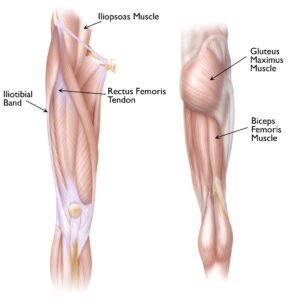 (Left) This front-view of the hip and thigh shows musculature most often associated with snapping hip: the iliotibial band, rectus femoris tendon, and iliopsoas muscle. (Right) The biceps femoris hamstring muscle travels under the gluteus maximus and can snap as it moves over the ischial tuberosity.
(Left) This front-view of the hip and thigh shows musculature most often associated with snapping hip: the iliotibial band, rectus femoris tendon, and iliopsoas muscle. (Right) The biceps femoris hamstring muscle travels under the gluteus maximus and can snap as it moves over the ischial tuberosity.
- Back of the Hip
Snapping at the back of the hip may occur when the hamstring tendon moves over the ischial tuberosity, the sitting bone. This type of snapping is less common and is usually felt as a catching sensation in the buttock area. - Cartilage Issues
Damage to the cartilage in the hip joint, particularly a tear in the labrum lining the socket, can also cause a snapping sensation. Loose cartilage fragments may float within the joint, leading to catching or locking of the hip. Unlike snapping caused by tendons, labral tears are more likely to produce deep groin pain and may result in additional symptoms such as joint instability.

